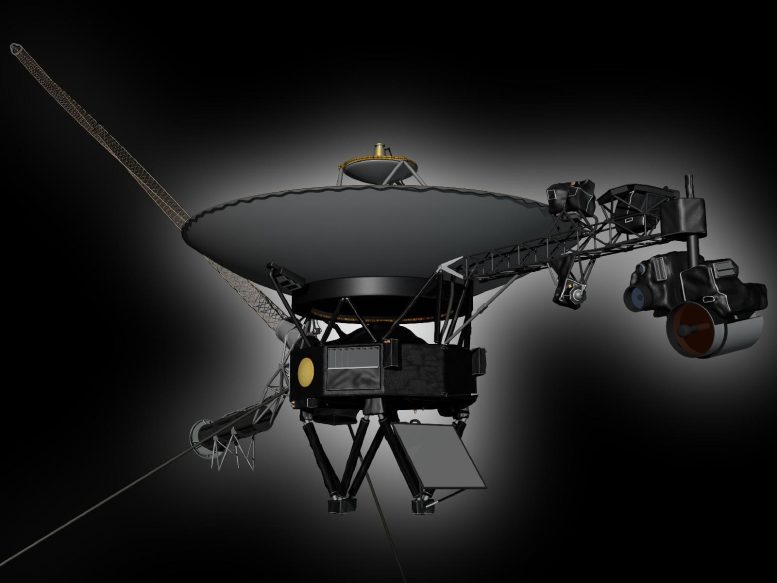
This artist’s rendering shows NASA’s Voyager spacecraft. On the boom to the right, the Cosmic Ray Science instrument, Low Energy Charged Particle detector, the Infrared Spectrometer and Radiometer, Ultraviolet Spectrometer, Photopolarimeter and Wide and Narrow Angle Cameras are visible. The bright gray square is an optical calibration plate for the instruments. The Golden Record, containing images and sounds from Earth, is the yellow circle on the main spacecraft body. The dish is the spacecraft’s high-gain antenna for communications with Earth. The magnetometer boom stretches out to the upper left. The radio isotope thermoelectric generators, Voyager’s power source, are visible to the lower left. The two long thin rods extending out to the left are antennas used by the Plasma Wave instrument. The Planetary Radio instrument also used these antennas when it was turned on. Credit: NASA/JPL-Caltech
Launched in 1977, the twin Voyager probes are NASA’s longest-operating mission and the only spacecraft ever to explore interstellar space.
Launched in 1977, NASA’s twin Voyager spacecraft inspired the world with pioneering visits to Jupiter, Saturn, Uranus, and Neptune. Their journey continues 45 years later as both probes explore interstellar space, the region outside the protective heliosphere created by our Sun. Researchers – some younger than the spacecraft – are now using Voyager data to solve mysteries of our solar system and beyond.
NASA’s twin Voyager probes have become, in many ways, time capsules of their era: They each carry an eight-track tape player for recording data, they transmit data about 38,000 times slower than a 5G internet connection, and they have about 3 million times less memory than modern cellphones.
Despite this, the Voyagers remain on the cutting edge of space exploration. Managed and operated by NASA’s Jet Propulsion Laboratory (JPL) in Southern California, they are the only probes to ever explore interstellar space – the galactic ocean that our Sun and its planets travel through.
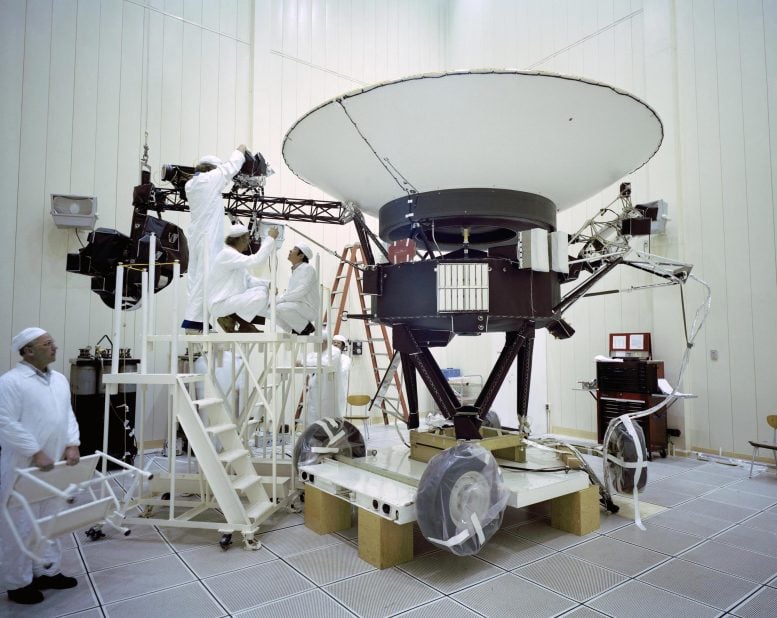
This archival image taken at NASA’s Jet Propulsion Laboratory on March 23, 1977, shows engineers preparing the Voyager 2 spacecraft ahead of its launch later that year. Credit: NASA/JPL-Caltech
The Sun and the planets reside in the heliosphere, a protective bubble created by the Sun’s magnetic field and the outward flow of solar wind (charged particles from the Sun). Scientists – some of them younger than the two distant spacecraft – are combining Voyager’s observations with data from newer missions to get a more complete picture of our Sun and how the heliosphere interacts with interstellar space.
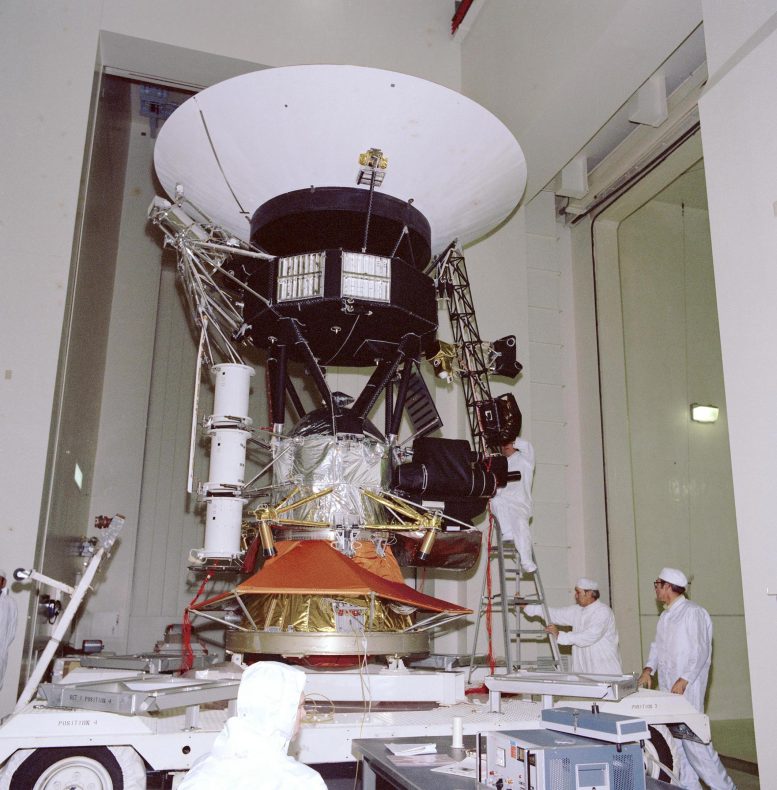
This archival photo shows engineers working on vibration acoustics and pyro shock testing of NASA’s Voyager on November 18, 1976. Credit: NASA/JPL-Caltech
“The heliophysics mission fleet provides invaluable insights into our Sun, from understanding the corona or the outermost part of the Sun’s atmosphere, to examining the Sun’s impacts throughout the solar system, including here on Earth, in our atmosphere, and on into interstellar space,” said Nicola Fox, director of the Heliophysics Division at NASA Headquarters in Washington. “Over the last 45 years, the Voyager missions have been integral in providing this knowledge and have helped change our understanding of the Sun and its influence in ways no other spacecraft can.”
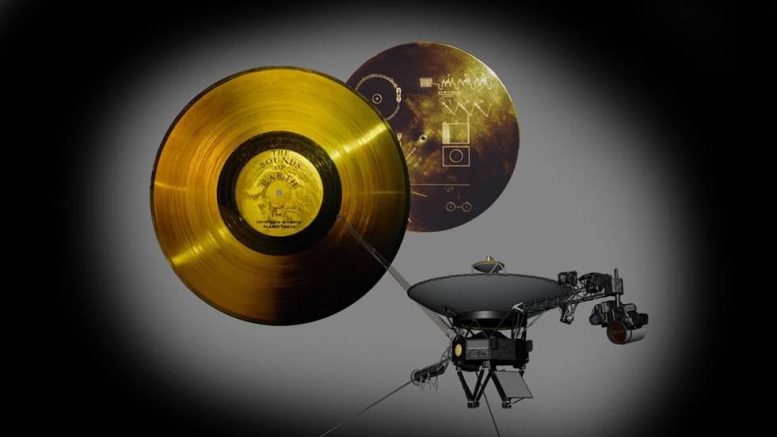
This image highlights the special cargo onboard NASA’s Voyager spacecraft: the Golden Record. Each of the two Voyager spacecraft launched in 1977 carry a 12-inch gold-plated phonograph record with images and sounds from Earth. Credit: NASA/JPL-Caltech
The Voyagers are also ambassadors for humanity, each carrying a golden record containing images of life on Earth, diagrams of basic scientific principles, and audio that includes sounds from nature, greetings in multiple languages, and music. The gold-coated records serve as a cosmic “message in a bottle” for anyone who might encounter the space probes. At the rate gold decays in space and is eroded by cosmic radiation, the records will last more than a billion years.
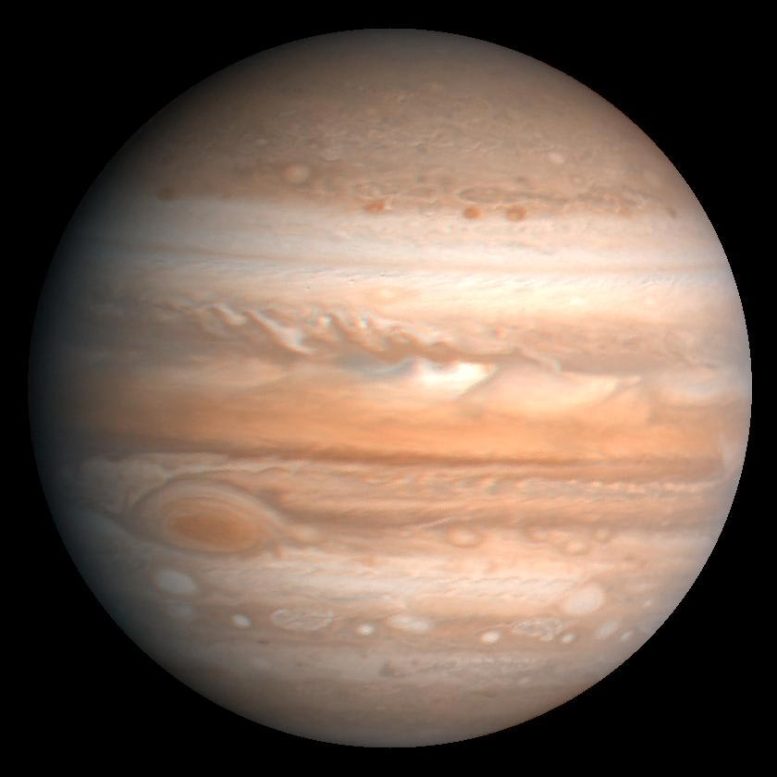
This processed color image of Jupiter was produced in 1990 by the U.S. Geological Survey from a Voyager image captured in 1979. Zones of light-colored, ascending clouds alternate with bands of dark, descending clouds. Credit: NASA/JPL/USGS
Beyond Expectations
Voyager 2 launched on August 20, 1977, quickly followed by Voyager 1 on September 5. Both probes traveled to Jupiter and Saturn, with Voyager 1 moving faster and reaching them first. Together, the probes unveiled much about the solar system’s two largest planets and their moons. Voyager 2 also became the first and only spacecraft to fly close to Uranus (in 1986) and Neptune (in 1989), offering humanity remarkable views of – and insights into – these distant worlds.
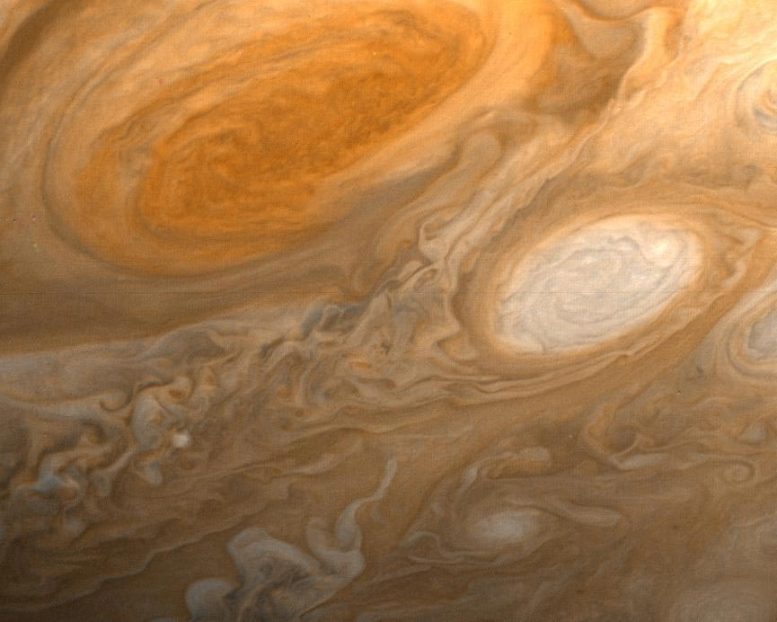
This photo of Jupiter was taken by NASA’s Voyager 1 on the evening of March 1, 1979, from a distance of 2.7 million miles (4.3 million kilometers). The photo shows Jupiter’s Great Red Spot (top) and one of the white ovals. Credit: NASA/JPL
While Voyager 2 was conducting these flybys, Voyager 1 headed toward the boundary of the heliosphere. Upon exiting it in 2012, Voyager 1 discovered that the heliosphere blocks 70% of cosmic rays, or energetic particles created by exploding stars. Voyager 2, after completing its planetary explorations, continued to the heliosphere boundary, exiting in 2018. The twin spacecraft’s combined data from this region has challenged previous theories about the exact shape of the heliosphere.
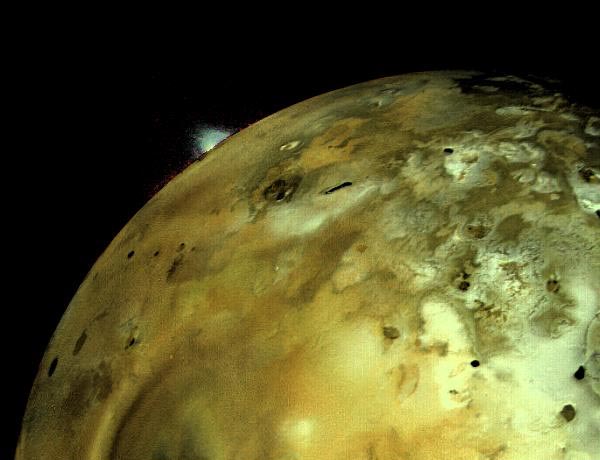
NASA’s Voyager 1 acquired this image of a volcanic explosion on Io on March 4, 1979, about 11 hours before the spacecraft’s closest approach to the moon of Jupiter. Credit: NASA/JPL
“Today, as both Voyagers explore interstellar space, they are providing humanity with observations of uncharted territory,” said Linda Spilker, Voyager’s deputy project scientist at JPL. “This is the first time we’ve been able to directly study how a star, our Sun, interacts with the particles and magnetic fields outside our heliosphere, helping scientists understand the local neighborhood between the stars, upending some of the theories about this region, and providing key information for future missions.”
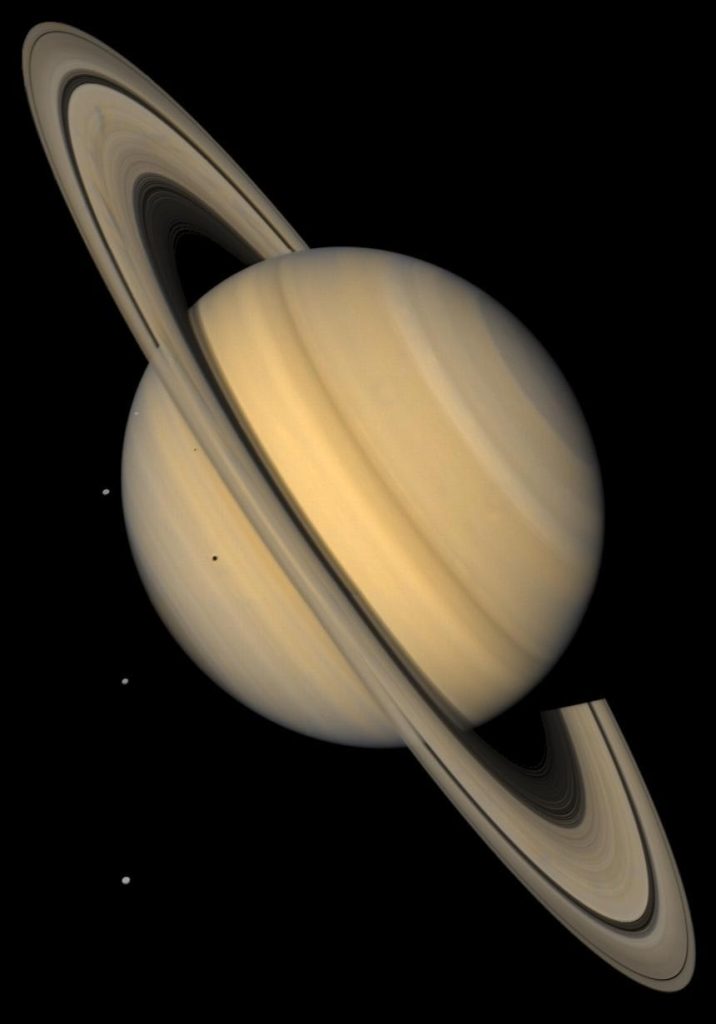
This approximate natural-color image from NASA’s Voyager 2 shows Saturn, its rings, and four of its icy satellites. Three satellites Tethys, Dione, and Rhea are visible against the darkness of space. Credit: NASA/JPL/USGS
The Long Journey
Over the years, the Voyager team has grown accustomed to surmounting challenges that come with operating such mature spacecraft, sometimes calling upon retired colleagues for their expertise or digging through documents written decades ago.
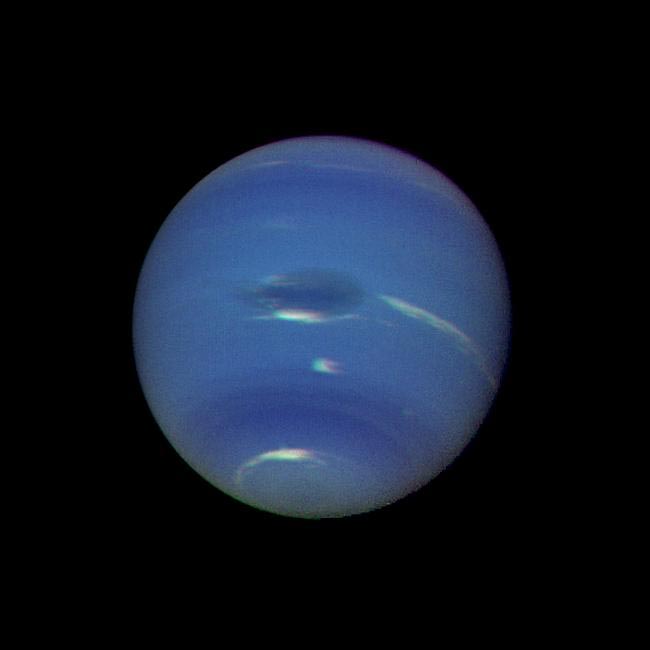
Neptune’s green-blue atmosphere was shown in greater detail than ever before in this image from NASA’s Voyager 2 as the spacecraft rapidly approached its encounter with the giant planet in August 1989. Credit: NASA/JPL
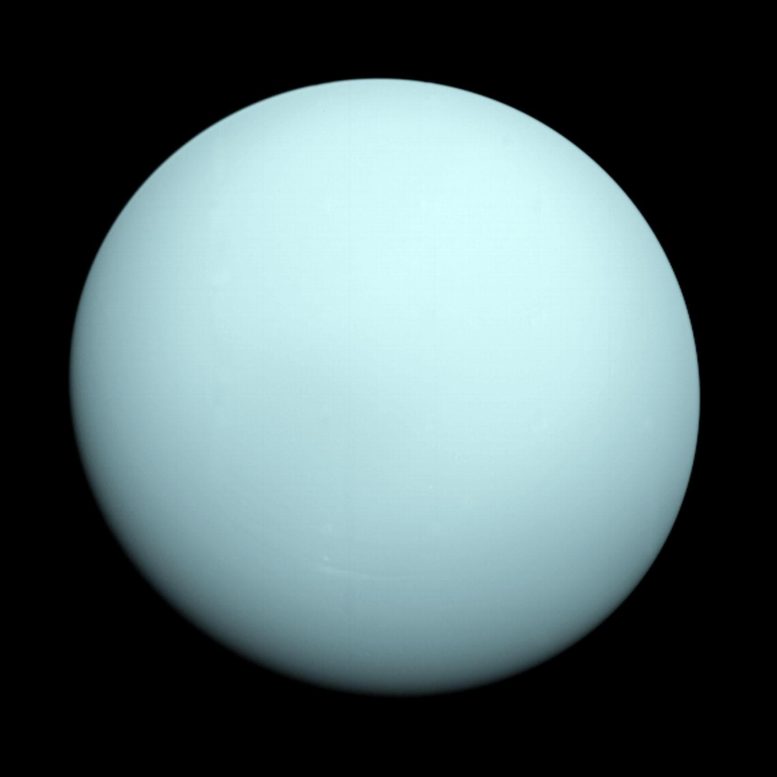
This is an image of the planet Uranus taken by the spacecraft Voyager 2 in 1986. Credit: NASA/JPL-Caltech
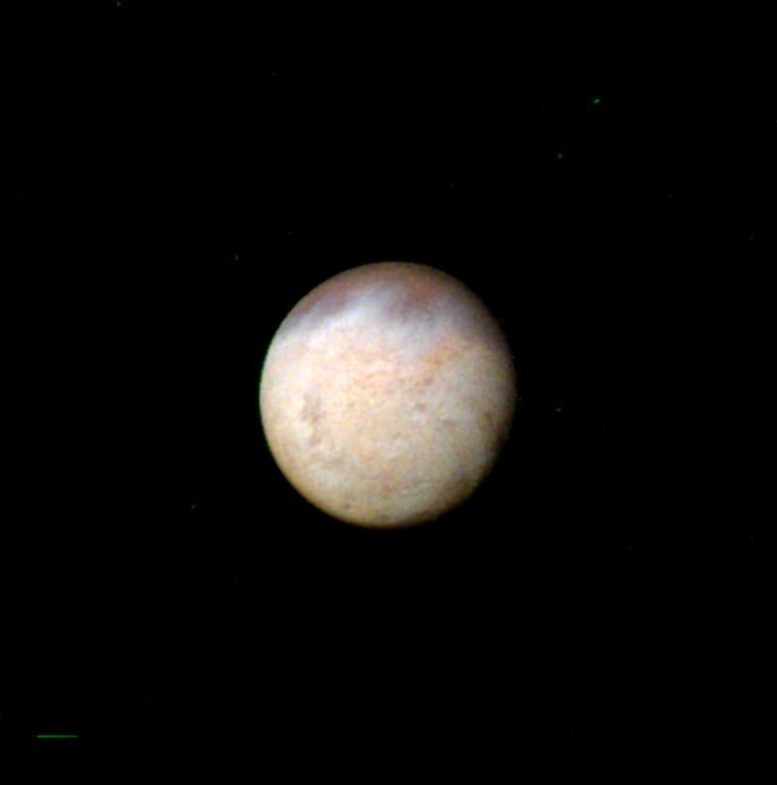
This image, taken by NASA’s Voyager 2 early in the morning of August 23, 1989, is a false color image of Triton, Neptune’s largest satellite; mottling in the bright southern hemisphere is present. Credit: NASA/JPL

This updated version of the iconic “Pale Blue Dot” image taken by the Voyager 1 spacecraft uses modern image-processing software and techniques to revisit the well-known Voyager view while attempting to respect the original data and intent of those who planned the images. Credit: NASA/JPL-Caltech
Each Voyager is powered by a radioisotope thermoelectric generator containing plutonium, which gives off heat that is converted to electricity. As the plutonium decays, the heat output decreases and the Voyagers lose electricity. To compensate, the team turned off all nonessential systems and some once considered essential, including heaters that protect the still-operating instruments from the frigid temperatures of space. All five of the instruments that have had their heaters turned off since 2019 are still working, despite being well below the lowest temperatures they were ever tested at.
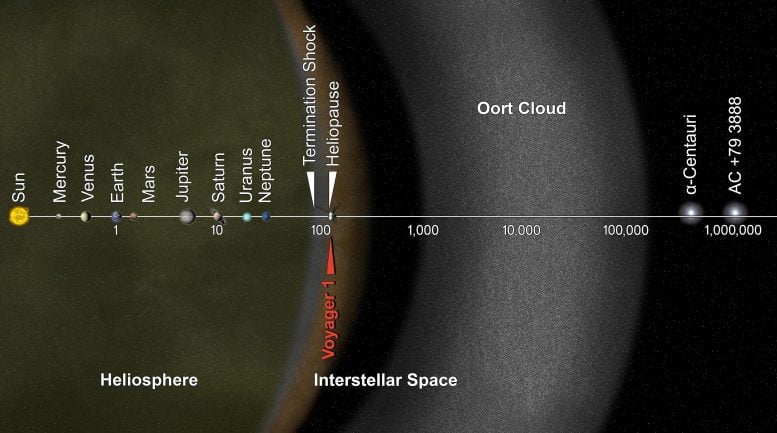
This illustrated graphic was made to mark Voyager 1’s entry into interstellar space in 2012. It puts solar system distances in perspective, with the scale bar in astronomical units and each set distance beyond 1 AU (the average distance between the Sun and Earth) representing 10 times the previous distance. Credit: NASA/JPL-Caltech
Recently, Voyager 1 began experiencing an issue that caused status information about one of its onboard systems to become garbled. Despite this, the system and spacecraft otherwise continue to operate normally, suggesting the problem is with the production of the status data, not the system itself. The probe is still sending back science observations while the engineering team tries to fix the problem or find a way to work around it.
“The Voyagers have continued to make amazing discoveries, inspiring a new generation of scientists and engineers,” said Suzanne Dodd, project manager for Voyager at JPL. “We don’t know how long the mission will continue, but we can be sure that the spacecraft will provide even more scientific surprises as they travel farther away from the Earth.”
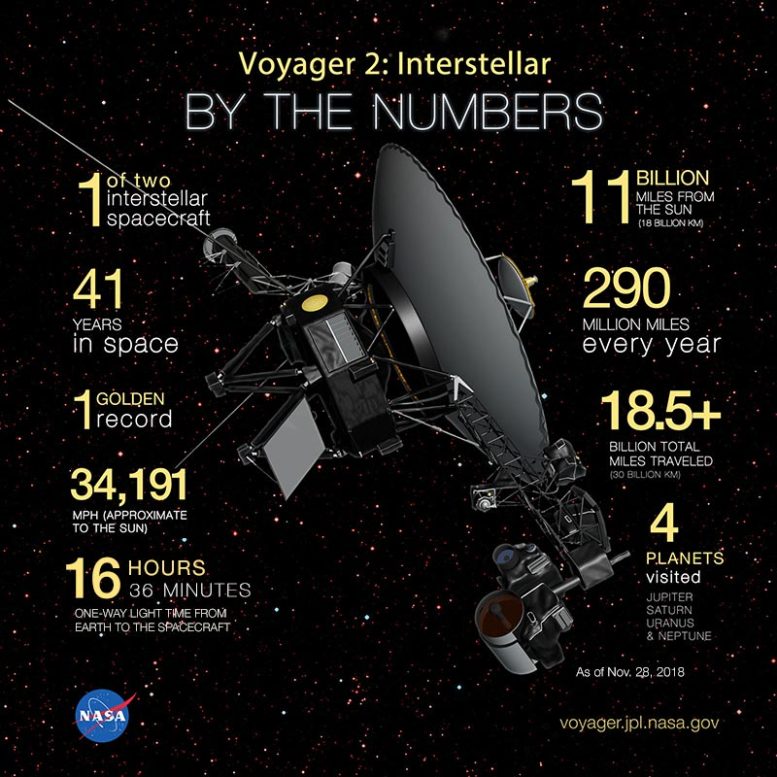
This graphic provides some of the mission’s key statistics from 2018, when NASA’s Voyager 2 probe exited the heliosphere. Credit: NASA/JPL-Caltech
More About the Mission
A division of Caltech in Pasadena, JPL built and operates the Voyager spacecraft. The Voyager missions are a part of the NASA Heliophysics System Observatory, sponsored by the Heliophysics Division of the Science Mission Directorate in Washington.
Voyager 2 launched on August 20, 1977, quickly followed by Voyager 1 on September 5. Both probes traveled to Jupiter and Saturn, with Voyager 1 moving faster and reaching them first. Together, the probes unveiled much about the solar system’s two largest planets and their moons. Voyager 2 also became the first and only spacecraft to fly close to Uranus (in 1986) and Neptune (in 1989), offering humanity remarkable views of – and insights into – these distant worlds.

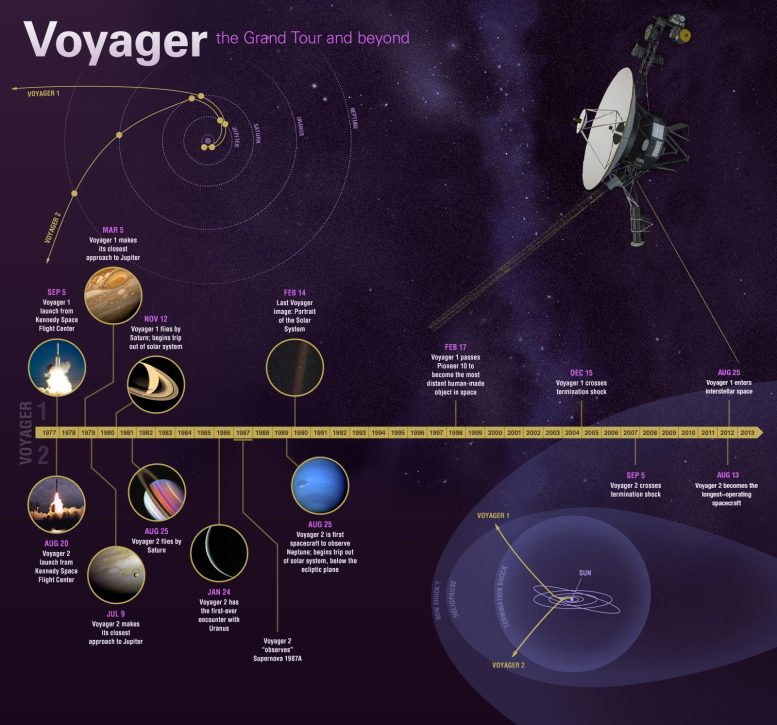
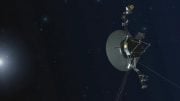
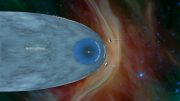
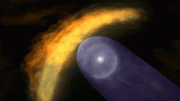

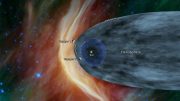
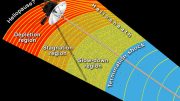
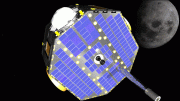
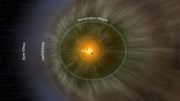
How is information transmitted from Voyager back to Earth and vice versa? WiFi? I want WiFi that strong for my house. Serious question.
“The uplink communications are executed via S-band microwave communications. The downlink communications are carried out by an X-band microwave transmitter on board the spacecraft, with an S-band transmitter as a back-up. All long-range communications to and from the two Voyagers have been carried out using their 3.7-meter (12 ft) high-gain antennas. The high-gain antenna has a beamwidth of 0.5° for X-band, and 2.3° for S-band.[38]: 17 (The low-gain antenna has a 7 dB gain and 60° beamwidth.)[38]: 17
Because of the inverse-square law in radio communications, the digital data rates used in the downlinks from the Voyagers have been continually decreasing the farther that they get from the Earth. For example, the data rate used from Jupiter was about 115,000 bits per second. That was halved at the distance of Saturn, and it has gone down continually since then.[38] Some measures were taken on the ground along the way to reduce the effects of the inverse-square law. In between 1982 and 1985, the diameters of the three main parabolic dish antennas of the Deep Space Network were increased from 64 to 70 m (210 to 230 ft)[38]: 34 dramatically increasing their areas for gathering weak microwave signals.
Whilst the craft were between Saturn and Uranus the onboard software was upgraded to do a degree of image compression and to use a more efficient Reed-Solomon error-correcting encoding.[38]: 33
Then between 1986 and 1989, new techniques were brought into play to combine the signals from multiple antennas on the ground into one, more powerful signal, in a kind of an antenna array.[38]: 34 This was done at Goldstone, California, Canberra, and Madrid using the additional dish antennas available there. Also, in Australia, the Parkes Radio Telescope was brought into the array in time for the fly-by of Neptune in 1989. In the United States, the Very Large Array in New Mexico was brought into temporary use along with the antennas of the Deep Space Network at Goldstone.[38]: 34 Using this new technology of antenna arrays helped to compensate for the immense radio distance from Neptune to the Earth.”
Amazing accomplishment for humanity. This shows what humans can do when their energy is not consumed by fighting with each other. Not only is this a model for scientific inspiration, it’s a great argument for world peace.
So true.
The Voyager probes are *not* the only interstellar vehicles. You forgot Pioneer 10.
There are five interstellar probes, all launched by the American space agency NASA: Voyager 1, Voyager 2, Pioneer 10, Pioneer 11 and New Horizons. As of 2019, Voyager 1, Voyager 2 and Pioneer 10 are the only probes to have actually reached interstellar space. The other two are on interstellar trajectories.
Good catch!
Test.
Test,
The communications accomplishment exceeds even the accomplishment of placing the probes on trajectory.